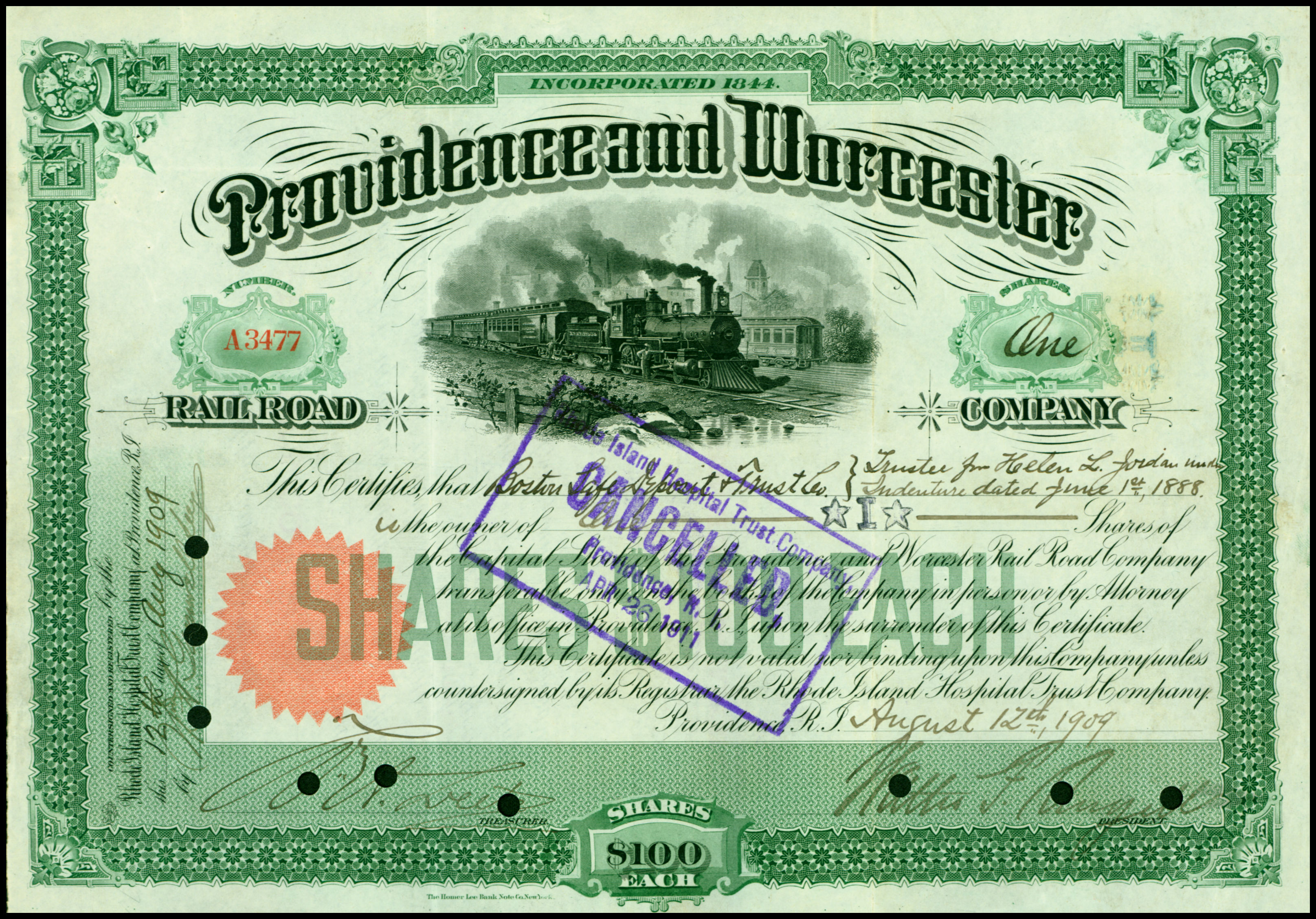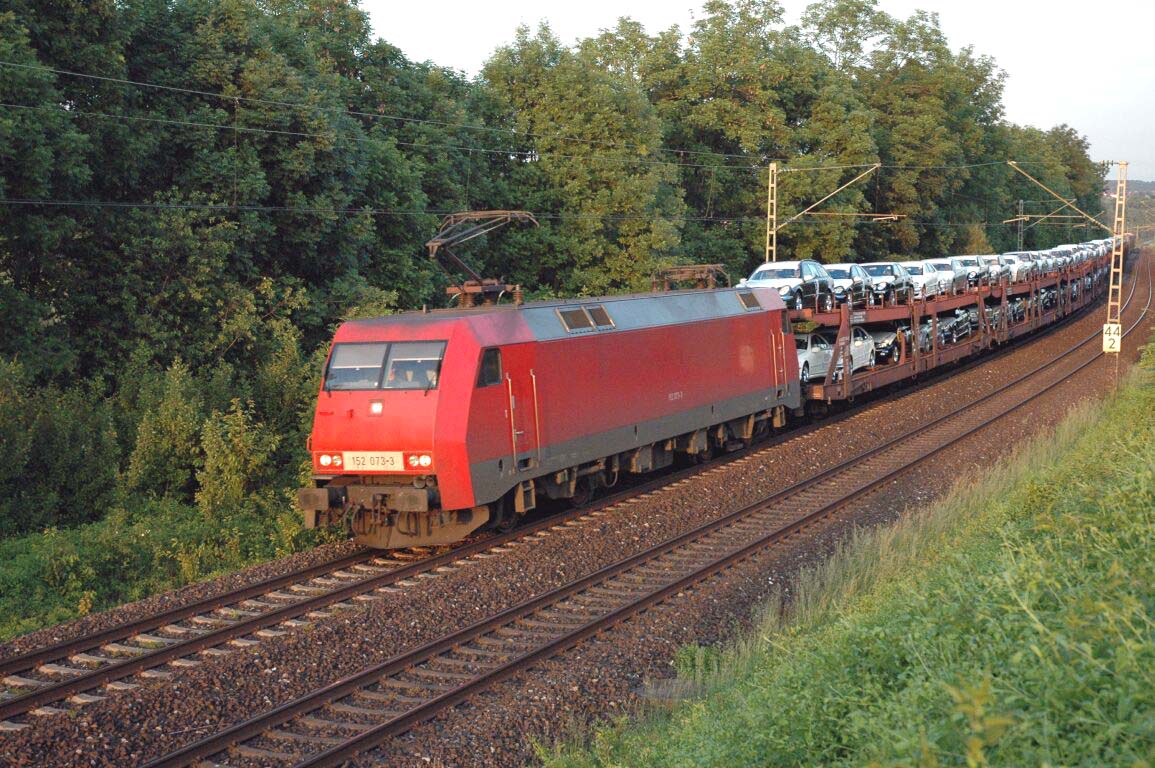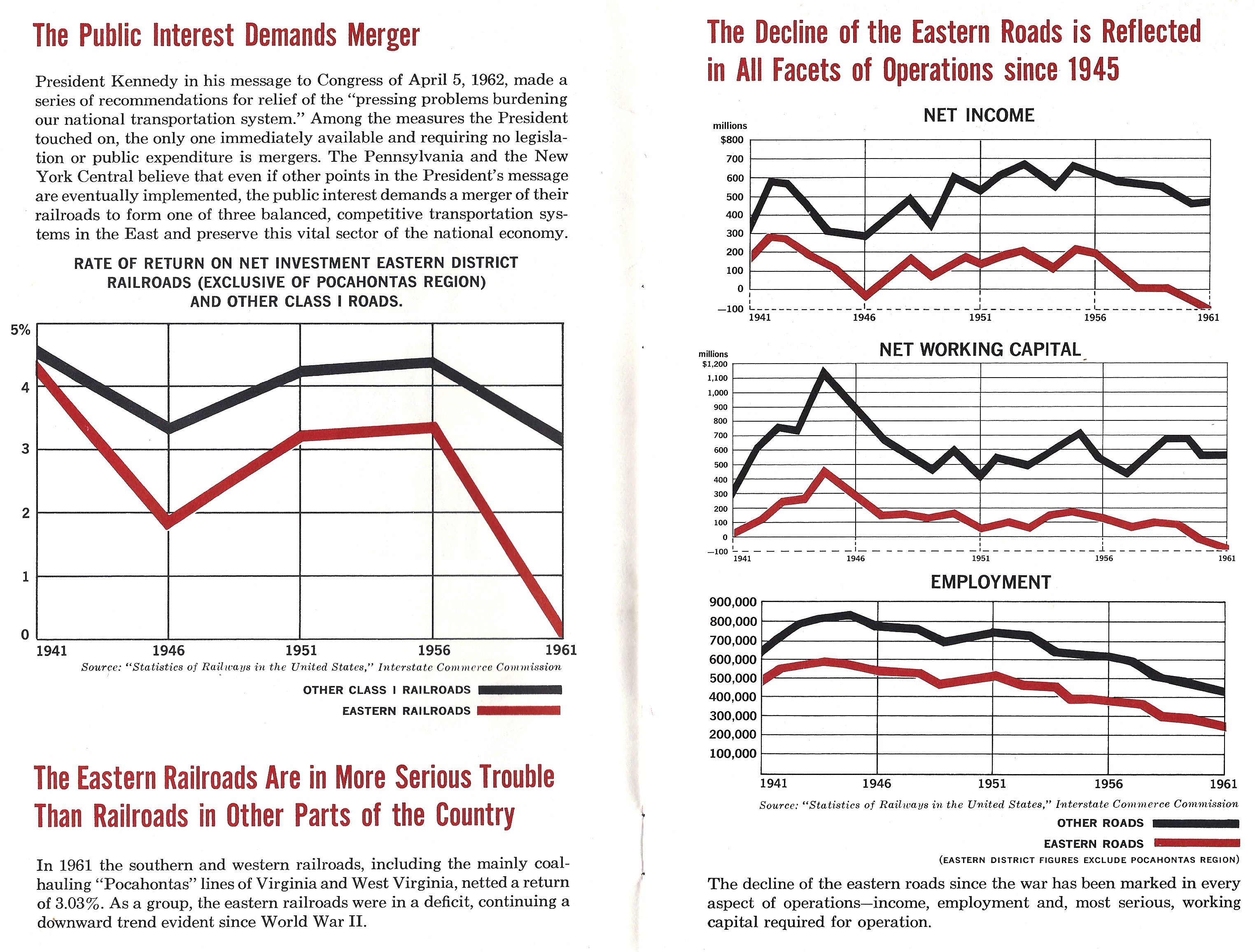|
Providence And Worcester Railroad
The Providence and Worcester Railroad is a Class II railroad operating of tracks in Rhode Island, Massachusetts, and Connecticut, as well as New York via trackage rights. The company was founded in 1844 to build a railroad between Providence, Rhode Island, and Worcester, Massachusetts, and ran its first trains in 1847. A successful railroad, the P&W subsequently expanded with a branch to East Providence, Rhode Island, and for a time leased two small Massachusetts railroads. Originally operating on a single track, its busy mainline was double-tracked beginning in 1853, following a fatal collision that year in Valley Falls, Rhode Island. The P&W operated independently until 1888, when the New York, Providence and Boston Railroad (NYP&B) leased it; the New York, New Haven and Hartford Railroad obtained the lease in 1892 when it purchased the NYP&B. The P&W continued to exist as a company, as special rules protecting minority shareholders made it prohibitively expensive for ... [...More Info...] [...Related Items...] OR: [Wikipedia] [Google] [Baidu] |
Connecticut
Connecticut () is the southernmost state in the New England region of the Northeastern United States. It is bordered by Rhode Island to the east, Massachusetts to the north, New York to the west, and Long Island Sound to the south. Its capital is Hartford and its most populous city is Bridgeport. Historically the state is part of New England as well as the tri-state area with New York and New Jersey. The state is named for the Connecticut River which approximately bisects the state. The word "Connecticut" is derived from various anglicized spellings of "Quinnetuket”, a Mohegan-Pequot word for "long tidal river". Connecticut's first European settlers were Dutchmen who established a small, short-lived settlement called House of Hope in Hartford at the confluence of the Park and Connecticut Rivers. Half of Connecticut was initially claimed by the Dutch colony New Netherland, which included much of the land between the Connecticut and Delaware Rivers, although the first ... [...More Info...] [...Related Items...] OR: [Wikipedia] [Google] [Baidu] |
Double-track Railway
A double-track railway usually involves running one track in each direction, compared to a single-track railway where trains in both directions share the same track. Overview In the earliest days of railways in the United Kingdom, most lines were built as double-track because of the difficulty of co-ordinating operations before the invention of the telegraph. The lines also tended to be busy enough to be beyond the capacity of a single track. In the early days the Board of Trade did not consider any single-track railway line to be complete. In the earliest days of railways in the United States most lines were built as single-track for reasons of cost, and very inefficient timetable working systems were used to prevent head-on collisions on single lines. This improved with the development of the telegraph and the train order system. Operation Handedness In any given country, rail traffic generally runs to one side of a double-track line, not always the same side a ... [...More Info...] [...Related Items...] OR: [Wikipedia] [Google] [Baidu] |
Northeast Corridor
The Northeast Corridor (NEC) is an electrified railroad line in the Northeast megalopolis of the United States. Owned primarily by Amtrak, it runs from Boston through Providence, New Haven, Stamford, New York City, Philadelphia, Wilmington, and Baltimore to Washington, D.C. The NEC closely parallels Interstate 95 for most of its length, and is the busiest passenger rail line in the United States both by ridership and by service frequency as of 2013. The NEC carries more than 2,200 trains daily. The corridor is used by many Amtrak trains, including the high-speed Acela, intercity trains and several long-distance trains. Most of the corridor also has frequent commuter rail service, operated by the MBTA, Shore Line East, Hartford Line, Metro-North Railroad, Long Island Rail Road, New Jersey Transit, SEPTA and MARC. While large through freights have not run on the NEC since the early 1980s, several companies continue to run smaller local freights over some select few se ... [...More Info...] [...Related Items...] OR: [Wikipedia] [Google] [Baidu] |
Queens
Queens is a borough of New York City, coextensive with Queens County, in the U.S. state of New York. Located on Long Island, it is the largest New York City borough by area. It is bordered by the borough of Brooklyn at the western tip of Long Island to its west, and Nassau County to its east. Queens also shares water borders with the boroughs of Manhattan, the Bronx, and Staten Island (via the Rockaways). With a population of 2,405,464 as of the 2020 census, Queens is the second most populous county in the State of New York, behind Kings County (Brooklyn), and is therefore also the second most populous of the five New York City boroughs. If Queens became a city, it would rank as the fifth most-populous in the U.S. after New York City, Los Angeles, Chicago, and Houston. Approximately 47% of the residents of Queens are foreign-born. Queens is the most linguistically diverse place on Earth and is one of the most ethnically diverse counties in the United States. Queens was es ... [...More Info...] [...Related Items...] OR: [Wikipedia] [Google] [Baidu] |
Unit Train
A unit train, also called a block train or a trainload service, is a train in which all cars (wagons) carry the same commodity and are shipped from the same origin to the same destination, without being split up or stored en route. They are distinct from wagonload trains, which comprise differing numbers of cars for various customers. Unit trains enable railways to compete more effectively with road and internal waterway transport systems. Time and money is saved by avoiding the complexities and delays that would otherwise be involved with assembling and disassembling trains at rail yards near the origin and destination. Unit trains are particularly efficient and economical for high-volume commodities. Since they often carry only one commodity, cars are of all the same type; often the cars are identical. Use Unit trains are typically used for the transportation of bulk goods. These can be solid substances such as: * Track ballast or gravel * Iron ore from mines to ports or s ... [...More Info...] [...Related Items...] OR: [Wikipedia] [Google] [Baidu] |
Interchange (freight Rail)
In freight rail transport, interchange is the practice of railroad Rail transport (also known as train transport) is a means of transport that transfers passengers and goods on wheeled vehicles running on rails, which are incorporated in tracks. In contrast to road transport, where the vehicles run on a pre ...s conveying freight cars ("foreign" cars) from other companies over their lines. This benefits shippers, whose cargo might otherwise have to be transhipped if the point of origin and destination are not both served by the same company. In passenger rail transport the term through car or through coach is used to denote a passenger car which is conveyed from one train to another, even within the same system. Interchange is sometimes equivalent to the practice of demurrage. See also * Dividing train * Portion working References * * {{rail-stub Rail freight transport ... [...More Info...] [...Related Items...] OR: [Wikipedia] [Google] [Baidu] |
Shortline Railroad
:''Short Line is also one of the four railroads in the American version of the popular board game Monopoly, named after the Shore Fast Line, an interurban streetcar line.'' A shortline railroad is a small or mid-sized railroad company that operates over a relatively short distance relative to larger, national railroad networks. The term is used primarily in the United States and Canada. In the U.S., railroads are categorized by operating revenue, and most shortline railroads fall into the Class III or Class II categorization defined by the Surface Transportation Board. Shortlines generally exist for one of three reasons: to link two industries requiring rail freight together (for example, a gypsum mine and a wall board factory, or a coal mine and a power plant); to interchange revenue traffic with other, usually larger, railroads; or to operate a tourist passenger train service. Often, short lines exist for all three of these reasons. History At the beginning of the rail ... [...More Info...] [...Related Items...] OR: [Wikipedia] [Google] [Baidu] |
Conrail
Conrail , formally the Consolidated Rail Corporation, was the primary Class I railroad in the Northeastern United States between 1976 and 1999. The trade name Conrail is a portmanteau based on the company's legal name. It continues to do business as an asset management and network services provider in three Shared Assets Areas that were excluded from the division of its operations during its acquisition by CSX Corporation and the Norfolk Southern Railway. The federal government created Conrail to take over the potentially-profitable lines of multiple bankrupt carriers, including the Penn Central Transportation Company and Erie Lackawanna Railway. After railroad regulations were lifted by the 4R Act and the Staggers Act, Conrail began to turn a profit in the 1980s and was privatized in 1987. The two remaining Class I railroads in the East, CSX Transportation and the Norfolk Southern Railway (NS), agreed in 1997 to acquire the system and split it into two roughly-equal parts (a ... [...More Info...] [...Related Items...] OR: [Wikipedia] [Google] [Baidu] |
Boston And Maine Railroad
The Boston and Maine Railroad was a U.S. Class I railroad in northern New England. Originally chartered in 1835, it became part of what was the Pan Am Railways network in 1983 (most of which was purchased by CSX in 2022). At the end of 1970, B&M operated on of track, not including Springfield Terminal. That year it reported 2,744 million ton-miles of revenue freight and 92 million passenger-miles. History The Andover and Wilmington Railroad was incorporated March 15, 1833, to build a branch from the Boston and Lowell Railroad at Wilmington, Massachusetts, north to Andover, Massachusetts. The line opened to Andover on August 8, 1836. The name was changed to the Andover and Haverhill Railroad on April 18, 1837, reflecting plans to build further to Haverhill, Massachusetts (opened later that year), and yet further to Portland, Maine, with renaming to the Boston and Portland Railroad on April 3, 1839, opening to the New Hampshire state line in 1840. The Boston and Maine Ra ... [...More Info...] [...Related Items...] OR: [Wikipedia] [Google] [Baidu] |
Interstate Commerce Commission
The Interstate Commerce Commission (ICC) was a regulatory agency in the United States created by the Interstate Commerce Act of 1887. The agency's original purpose was to regulate railroads (and later trucking) to ensure fair rates, to eliminate rate discrimination, and to regulate other aspects of common carriers, including interstate bus lines and telephone companies. Congress expanded ICC authority to regulate other modes of commerce beginning in 1906. Throughout the 20th century, several of ICC's authorities were transferred to other federal agencies. The ICC was abolished in 1995, and its remaining functions were transferred to the Surface Transportation Board. The Commission's five members were appointed by the President with the consent of the United States Senate. This was the first independent agency (or so-called '' Fourth Branch''). Creation The ICC was established by the Interstate Commerce Act of 1887, which was signed into law by President Grover Cleveland. ... [...More Info...] [...Related Items...] OR: [Wikipedia] [Google] [Baidu] |
Penn Central Transportation Company
The Penn Central Transportation Company, commonly abbreviated to Penn Central, was an American class I railroad that operated from 1968 to 1976. Penn Central combined three traditional corporate rivals (the Pennsylvania, New York Central and the New York, New Haven and Hartford railroads), all united by heavy service into the New York metropolitan area and (to a lesser extent) New England and Chicago. The new company failed barely two years after formation, the largest bankruptcy in U.S. history at the time. The Penn Central's railroad assets were nationalized into Conrail along with the other bankrupt northeastern roads; its real estate and insurance holdings successfully reorganized into American Premier Underwriters. History Pre-merger The Penn Central railroad system developed in response to challenges facing northeastern American railroads during the late 1960s. While railroads elsewhere in North America drew revenues from long-distance shipments of commodities s ... [...More Info...] [...Related Items...] OR: [Wikipedia] [Google] [Baidu] |
New York, New Haven And Hartford Railroad
The New York, New Haven and Hartford Railroad , commonly known as The Consolidated, or simply as the New Haven, was a railroad that operated in the New England region of the United States from 1872 to December 31, 1968. Founded by the merger of the New York and New Haven Railroad, New York and New Haven and Hartford and New Haven Railroad, Hartford and New Haven railroads, the company had near-total dominance of railroad traffic in Southern New England for the first half of the 20th century. Beginning in the 1890s and accelerating in 1903, New York banker J. P. Morgan sought to monopolize New England transportation by arranging the NH's acquisition of 50 companies, including other railroads and steamship lines, and building a network of electrified trolley lines that provided interurban transportation for all of southern New England. By 1912, the New Haven operated more than of track, with 120,000 employees, and practically monopolized traffic in a wide swath from Boston to New ... [...More Info...] [...Related Items...] OR: [Wikipedia] [Google] [Baidu] |









